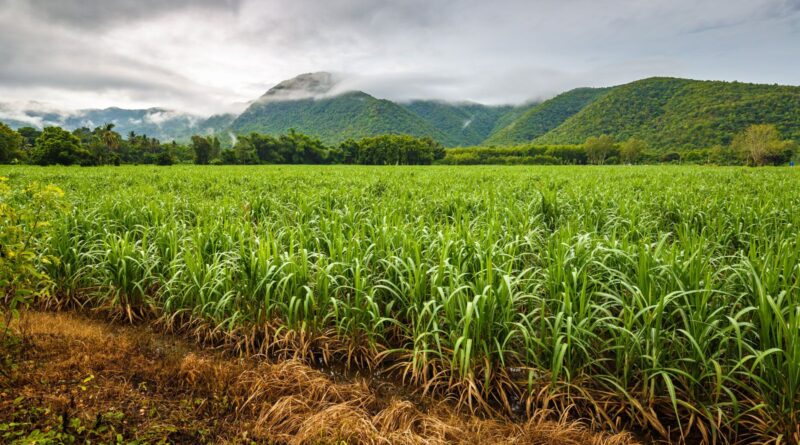A Significant Cash Crop: Sugarcane
Sugarcane growing is an important agricultural activity with significant economic benefits in India and other tropical nations. This blog will go over every step of the procedure, including selecting the ideal soil, watering, and thoroughly harvesting sugarcane. Additionally, know how to increase your sugarcane productivity and earnings by using the appropriate methods and equipment like Sonalika rotavator.
We will also discuss popular kinds of sugarcane, efficient ways to manage pests, and the significance of prepared land. Take a look to discover more and begin growing sugarcane right now!
Overview of Sugarcane
A major cash crop in India and other tropical countries is sugarcane. In warm, sunny regions, it grows nicely. This crop has many applications such as sugar, ethanol, and other products. Additionally, it promotes a variety of sectors, enhancing employment and the economy.
Due to the high demand, sugarcane farming generates substantial income for farmers. Moreover, other sectors can utilise its byproducts, like bagasse and molasses. Sugarcane growing is generally vital for agriculture and industry. The upcoming paragraphs will discuss the cultivation process of sugarcane in detail.
Climate Conditions
Warm and tropical regions are ideal for sugarcane growth. For optimal growth, it requires temperatures ranging from 20°C to 35°C. In addition, proper development requires a large amount of sunshine. Rainfall must be constant for the crop, ideally between 1000 and 1500 mm each year. But, much moisture can damage the roots, which is why proper drainage is essential. Furthermore, irrigation is required in arid places to keep moisture levels consistent.
Soil Requirements
Rich soil with good drainage is ideal for sugarcane growth. The best soil types for its growth are loamy or alluvial. These soils are good at holding moisture and efficiently removing extra water. In order to get optimal results, the pH of the soil should also be between 5.5 and 6.5. Additionally, compost and other organic materials increase crop output and soil fertility.
To keep the proper nutritional balance, regular soil testing is necessary. All things considered, profitable and healthy sugarcane crops are ensured by rich, slightly acidic soil.
Land Preparation
A healthy harvest depends on the preparation of the ground for sugarcane. To loosen the soil, plough the land first. After that, level the field to guarantee uniform water distribution.
Sonalika rotavators are excellent for this task. They have long-lasting performance since they are manufactured with strong steel components. The Sonalika rotavator 6 feet price is worth the investment. Additionally, its well-designed blades cut and mix soil effectively, resulting in excellent planting conditions. You can easily and effectively prepare your land using Sonalika’s high-quality rotavators.
After that, level the land to enhance irrigation and avoid waterlogging. Compost and other organic waste nourish the soil with vital nutrients. Lastly, make planting ridges or furrows to control soil erosion and water erosion.
Popular Varieties in India
India cultivates a number of well-known sugarcane varieties, each appropriate for a certain temperature zone. Co 86032 is commonly used because of its excellent yield and disease resistance. CoJ 64, another favourite, is known for its high sugar content and early maturity.
Co 0238 is extremely famous because of its excellent ratooning abilities and high sucrose content. Farmers also select Co 0118 because of its superior growth in a variety of soil conditions. Every variety has distinct advantages, enabling farmers to choose the most advantageous one for their area.
Planting Techniques
In India, sugarcane is normally planted in the spring or autumn. Always choose three-bud cane sets that are disease-free and in good health. Apply fungicides to these sets to stop diseases. After that, plant the sets 90 to 120 cm apart in trenches or furrows. Carefully cover the cane sets with soil to allow the buds to grow. Furthermore, proper spacing and depth promote healthy root development. Finally, irrigate the area to help with germination and early development.
Irrigation
Irrigation is essential to sugarcane’s growth. Farmers commonly employ furrow or drip irrigation systems. At the early development stage, regular water supply is necessary. Then, slow down the water supply to prevent waterlogging as the crop ages. Regular watering ensures that the soil is wet but not too saturated. In addition, farmers keep an eye on the crop’s water requirements in relation to the weather. Moreover, effective irrigation enhances sugarcane output and crop health.
Pest Control
For sugarcane crops to be healthy, pest management is essential. To deal with insect problems, farmers employ integrated pest management. First, routinely check fields for indications of pests. Then, to get rid of pests, employ biopesticides or natural predators. Furthermore, chemical insecticides should only be used when required.
For maximum efficacy, timing and dose must be correct. It is possible to lessen insect damage and boost productivity by conducting routine crop inspections and using preventative measures.
Harvesting
Sugarcane harvesting requires a few essential procedures. Farmers first determine if the cane is ripe, which is generally between 12 and 18 months old. Next, cut the cane around the base, leaving a little stump. After that, clear up any remaining waste and leaves. Harvesting can be done by machines or by hand using machetes. Then, move the cane swiftly after cutting it to keep it from spoiling.
Conclusion
To sum up, with the right methods and equipment, sugarcane farming can be a profitable business. You can increase your production by knowing the right amount of rainfall, organic matter, and soil conditions. Additionally, to guarantee healthy crops, efficient irrigation and pest management techniques should be used.
A significant factor is also the proper sugarcane variety selection for your area. Furthermore, utilizing top-notch machinery, such as Sonalika rotavators, can significantly enhance efficiency and land preparation. Moreover, these rotavators come in many sizes, from 3-feet to 8-feet. You can visit the Tractor junction website to check the Sonalika rotavator 7 feet price.
You may have a productive and effective sugarcane harvest by following these procedures. Let your sugarcane growing flourish by putting these strategies into practice right now!

